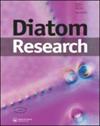Both hydrology and physicochemistry influence diatom morphometry
IF 1.3
3区 生物学
Q2 MARINE & FRESHWATER BIOLOGY
引用次数: 3
Abstract
It has been shown that size of planktonic diatoms responds to changes in water chemistry, but little is known about the influence of different types of environmental factors upon benthic diatom size variation. Here we ask whether water chemistry or hydromorphological influences show a stronger effect on benthic diatom morphometry. 10,624 diatom valves / frustules were imaged, identified and measured from 48 samples across eight sites in the Ebro river basin obtained during ten years of biomonitoring work. We analysed how differences in surface-to-volume (S/V) ratio and other morphometric characteristics were related to spatial and temporal variability in environmental parameters. Our results show that both hydrological and physicochemical variables generated significant responses in interspecific and intraspecific morphometric variation. S/V ratio and transapical width showed the strongest responses, followed by (the predominantly used) cell volume. Freshwater benthic diatom morphology seems to respond to diverse environmental factors and could provide complementary ecological information to community composition.水文学和物理化学都影响硅藻形态计量学
浮游硅藻的大小随水体化学变化而变化,但不同类型环境因子对底栖硅藻大小变化的影响尚不清楚。在这里,我们询问水化学或水形态影响是否对底栖硅藻形态测定有更强的影响。在10年的生物监测工作中,对埃布罗河流域8个地点的48个样本进行了10,624个硅藻瓣/小体的成像、识别和测量。我们分析了地表体积比(S/V)和其他形态特征的差异如何与环境参数的时空变化相关。我们的研究结果表明,水文和物理化学变量在种间和种内的形态变化中产生了显著的响应。S/V比和跨根尖宽度的响应最强,其次是细胞体积(主要使用)。淡水底栖硅藻形态对多种环境因子有响应,可为群落组成提供补充的生态信息。
本文章由计算机程序翻译,如有差异,请以英文原文为准。
求助全文
约1分钟内获得全文
求助全文
来源期刊

Diatom Research
生物-海洋与淡水生物学
CiteScore
2.70
自引率
16.70%
发文量
27
审稿时长
>12 weeks
期刊介绍:
Diatom Research is the journal of the International Society for Diatom Research. The journal is published quarterly, in March, June, September and December, and welcomes manuscripts on any aspect of diatom biology.
In addition to full-length papers, short notes and reviews of recent literature are published which need not contain all the sections required for full-length papers; we see these as being necessary to record information which is of interest but which cannot be followed up in detail. Discursive “Opinion” papers are encouraged which would not necessarily follow the normal lay-out. If extremely long papers are to be offered, the author(s) should contact the editors first to discuss any problems. Book reviews, obituaries and meeting reports can be published. All papers will be subject to critical review by the editors and referees, as appropriate to their content. Papers will be accepted in English only.
 求助内容:
求助内容: 应助结果提醒方式:
应助结果提醒方式:


